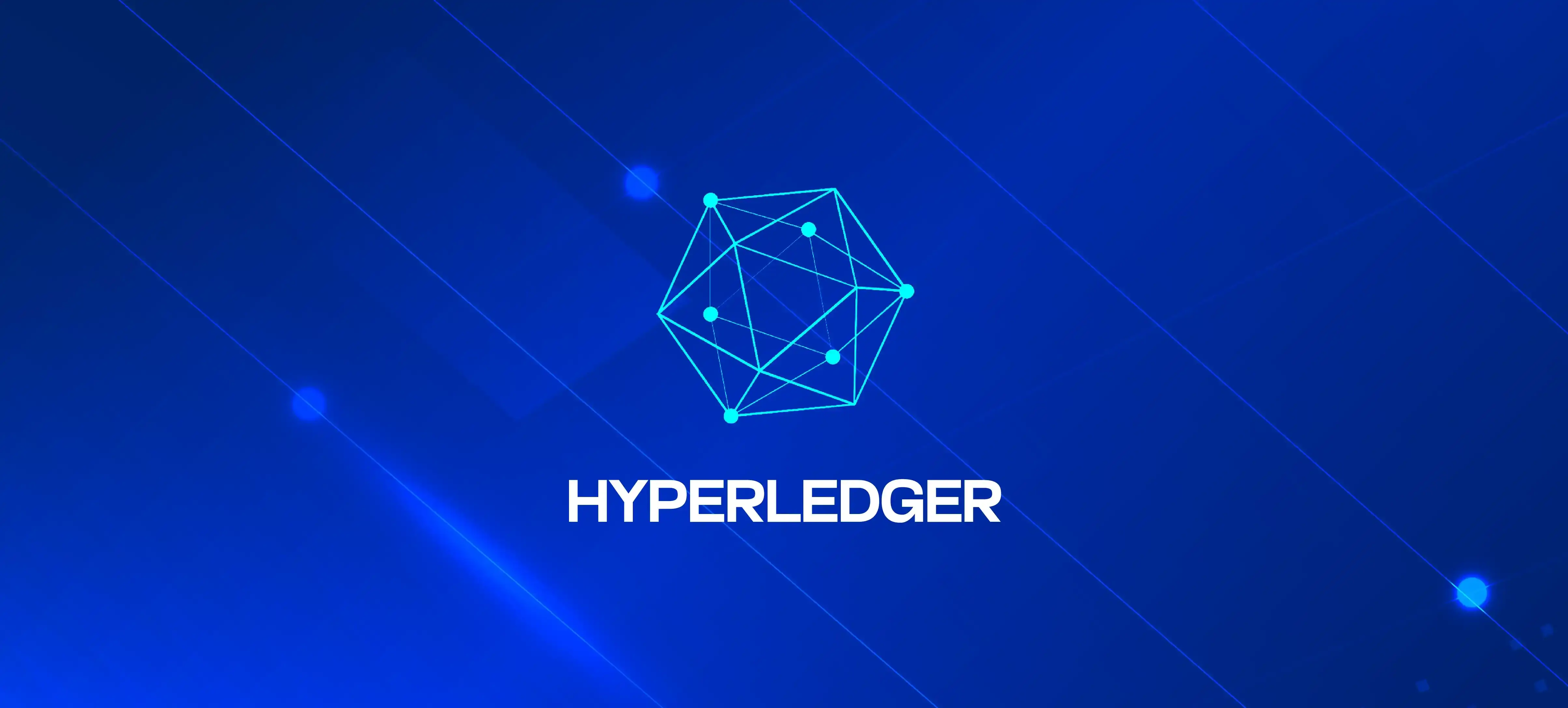
Introduction to Ethereum Smart contracts
Table of Contents
- What are smart contracts?
- How do smart contracts work?
- Advantages of using smart contracts
- What are the risks of using smart contracts?
- Why Use Solidity programming language for writing smart contracts?
- Use cases of Solidity
- Best Practices and safety concerns for smart contract development
- Use a comfortable programming language
- Wrap up
Smart contracts are computer programs stored on the Ethereum blockchain. They help us automate the execution of agreements between two or more parties. Smart contracts cannot be modified or changed once applied, ensuring that the terms of the agreement are always met.
What are smart contracts?
A smart contract agreement is a sort of decentralized software (dApp) on the Ethereum blockchain. As said above, once a smart contract is implemented, it can't be changed, this ensures terms of the settlement are always met.
How do smart contracts work?
Smart contracts are written in a programming language known as Solidity. Solidity is a turing entire language that is used for writing the contract. As soon as a smart contract is written, it's far compiled into bytecode and carried out at the Ethereum blockchain. When a smart contract is implemented, it's far assigned a completely unique address on the blockchain.
Advantages of using smart contracts
There are some advantages to the usage of smart contracts, including
Trustless execution
As soon as a smart contract is compiled into bytecode and carried on the blockchain, it becomes immutable. This makes smart contracts best for applications that require an excessive degree of security.
Transparency
All smart contracts are stored on the Ethereum blockchain, which means that they are transparent and auditable. This transparency makes it easy to verify the terms of an agreement and to track the execution of a smart contract.
What are the risks of using smart contracts?
Though there are numerous advantages to the use of smart contracts, there also are some risks as well, including:
1. Security
Smart contracts are complex programs, and there is always the risk that they may contain errors. This could lead to the contract being hacked or exploited.
2. Complexity
As smart contracts are complex to understand, let alone to use, this makes it difficult for users to understand the terms of an agreement or to track the execution of a smart contract.
3. Cost
The cost of deploying and using smart contracts is quite high, making them prohibitively expensive for some applications.
Why Use Solidity programming language for writing smart contracts?
Solidity helps to construct smart contracts, self-executing contracts that run on the blockchain. You can also use them to build decentralized applications (DApps), automating transactions and settlements.
Solidity is a statically typed programming language. It is designed to be used in the Ethereum virtual machine (EVM), that's the runtime environment for smart contracts on the Ethereum blockchain.
Moreover, it is a powerful language to create diverse smart contracts.
Though Solidity is relatively a new language, it is rapidly becoming the de facto well-known for smart agreement improvement.
Pros of using Solidity
- It is a statically typed language, which means that errors are caught at compile time.
- It is a curly-brace language, which makes it easy to read and write.
- It is influenced by C++, Python, and JavaScript, so it is easy to learn for developers who are familiar with those languages.
- It is the most popular language for smart contract development, so there is a large and growing community of Solidity developers and resources available.
Key features of Solidity
Contract Orientated
Solidity revolves around the concept of contracts, encapsulating code and information. Contracts can interact with each other, permitting the advent of sophisticated decentralized structures.
Development environment and tool
To develop smart contracts in Solidity, developers can make use of numerous environments and tools. The famous picks include Remix IDE, Truffle, and Hardhat. These tools provide capabilities like code compilation, debugging, deployment, and checking out abilities, helping to improve the overall improvement experience.
Use cases of Solidity

Solidity has gained a substantial reputation due to its huge variety of use cases. Some notable examples encompass:
Tokenization
Solidity enables the creation of ERC20 and ERC721 tokens, which have revolutionized the world of virtual assets and non-fungible tokens (NFTs).
Decentralized Finance (DeFi)
Many DeFi systems are constructed on Solidity, allowing customers to participate in lending, borrowing, decentralized exchanges, and yield farming.
Testing and Deploying Smart Contracts at the Ethereum Blockchain
Before deploying a smart contract to the Ethereum blockchain, it is crucial to check it thoroughly. There are several tools available for testing smart contracts, including Truffle, hardhat, and Remix. Once the smart contract is done with examination and checking, you can deploy it to the Ethereum blockchain using a wallet like MetaMask.
Deployment
Once a smart contract has been tested, it is able to be deployed to the Ethereum blockchain. There are some different approaches to deploying the smart contract such as:
The usage of a development environment
Development environments like Remix assist you to deploy smart contracts to testnets like Rinkeby or Ropsten, and Sepolia. This is a great way to test your smart contract before deploying it to the main net.
Usage of a wallet
Wallets like MetaMask also allow you to deploy smart contracts to the main net. This is a more secure way to deploy them; however, it requires you to have some faucets that are ETHs in your wallet.
Interacting with smart Contracts the usage of web3.Js or ethers.Js
There are some JavaScript libraries that you can use to interact with smart contracts. The most popular libraries are web3.Js and ethers.Js. These libraries offer techniques for calling smart contract features, shifting tokens, getting and setting smart contract statistics.
WEB3.Js and ethers.Js are two of the most famous JavaScript libraries for interacting with smart contracts on the Ethereum blockchain. They both provide a number of techniques for interacting with smart contracts, consisting of:
Calling smart contract functions
Both web3.Js and ethers.Js offer strategies for calling smart contract functions. These methods let you execute the capabilities described in a smart contract, such as transferring tokens or changing the state of the contract.
Getting and setting smart contract data
Both web3.Js and ethers.Js provide strategies for buying and setting smart agreement statistics. These methods let you read and write the statistics stored in a smart contract, consisting of the balance of an account or the value of a variable.
Transferring tokens
You can use either of web3.Js or ethers.Js strategies for transferring tokens. These techniques allow us to transfer tokens from one account to any other with the use of a smart contract.
Best Practices and safety concerns for smart contract development

There are some high-quality practices that you must consider implementing while developing the smart contracts. These practices include:
Use a comfortable programming language
Solidity is a popular choice for smart settlement development, however, it's essential to be aware of its obstacles.
For example, Solidity does not have a built-in type system, making it more difficult to write secure code.
Test smart contracts thoroughly before deployment
Testing smart contracts include unit testing, integration testing, and system testing. It is also crucial to check smart contracts with one-of-a-kind inputs and situations to make sure that they are running as anticipated.
Use a secure development environment
You must use a secure operating system, a secure compiler, and a secure IDE. It is also important to be aware of the security implications of using third-party tools and libraries.
Avoid the use of third-party libraries
In case you do use third-party libraries, make certain that they're well-maintained and have been thoroughly examined.
Ensure the Immutability of smart contracts
Immutability of smart contracts allows you to save malicious actors from tampering with the agreement after it's been deployed.
Further to those best practices, it is also essential to be aware of the particular security dangers related to smart contracts.
Reentrancy attacks
Reentrancy attacks arise when a smart agreement calls some other smart agreement, and the second smart agreement calls to return to the first smart contract. This could allow an attacker to execute the equal code a couple of times, draining the funds from the primary smart agreement.
Timestamp dependency attacks
Timestamp attacks exploit the fact that smart contracts are executed in a deterministic order based on the block timestamp. An attacker can use this to their advantage by submitting malicious transactions that depend on the timestamp of other transactions.
Front-running attacks
Front-running attacks occur when an attacker sees a transaction being submitted to the blockchain and then submits a transaction that takes advantage of the first transaction. This can allow an attacker to steal funds from the first transaction.
Wrap up
To wrap things up, Ethereum smart contracts are like digital agreements that run on autopilot. They're written using a language called Solidity and are as unchangeable as a stone once they're set in motion.
But, like anything cool, there are some catches. These contracts can be pretty complex, so mistakes can happen. And while Solidity is a superhero language, it's not without its quirks. So, we need to test things thoroughly and be cautious about security.
Remember, no good thing comes without a little effort.
Table of Contents
- What are smart contracts?
- How do smart contracts work?
- Advantages of using smart contracts
- What are the risks of using smart contracts?
- Why Use Solidity programming language for writing smart contracts?
- Use cases of Solidity
- Best Practices and safety concerns for smart contract development
- Use a comfortable programming language
- Wrap up
Smart contracts are computer programs stored on the Ethereum blockchain. They help us automate the execution of agreements between two or more parties. Smart contracts cannot be modified or changed once applied, ensuring that the terms of the agreement are always met.
What are smart contracts?
A smart contract agreement is a sort of decentralized software (dApp) on the Ethereum blockchain. As said above, once a smart contract is implemented, it can't be changed, this ensures terms of the settlement are always met.
How do smart contracts work?
Smart contracts are written in a programming language known as Solidity. Solidity is a turing entire language that is used for writing the contract. As soon as a smart contract is written, it's far compiled into bytecode and carried out at the Ethereum blockchain. When a smart contract is implemented, it's far assigned a completely unique address on the blockchain.
Advantages of using smart contracts
There are some advantages to the usage of smart contracts, including
Trustless execution
As soon as a smart contract is compiled into bytecode and carried on the blockchain, it becomes immutable. This makes smart contracts best for applications that require an excessive degree of security.
Transparency
All smart contracts are stored on the Ethereum blockchain, which means that they are transparent and auditable. This transparency makes it easy to verify the terms of an agreement and to track the execution of a smart contract.
What are the risks of using smart contracts?
Though there are numerous advantages to the use of smart contracts, there also are some risks as well, including:
1. Security
Smart contracts are complex programs, and there is always the risk that they may contain errors. This could lead to the contract being hacked or exploited.
2. Complexity
As smart contracts are complex to understand, let alone to use, this makes it difficult for users to understand the terms of an agreement or to track the execution of a smart contract.
3. Cost
The cost of deploying and using smart contracts is quite high, making them prohibitively expensive for some applications.
Why Use Solidity programming language for writing smart contracts?
Solidity helps to construct smart contracts, self-executing contracts that run on the blockchain. You can also use them to build decentralized applications (DApps), automating transactions and settlements.
Solidity is a statically typed programming language. It is designed to be used in the Ethereum virtual machine (EVM), that's the runtime environment for smart contracts on the Ethereum blockchain.
Moreover, it is a powerful language to create diverse smart contracts.
Though Solidity is relatively a new language, it is rapidly becoming the de facto well-known for smart agreement improvement.
Pros of using Solidity
- It is a statically typed language, which means that errors are caught at compile time.
- It is a curly-brace language, which makes it easy to read and write.
- It is influenced by C++, Python, and JavaScript, so it is easy to learn for developers who are familiar with those languages.
- It is the most popular language for smart contract development, so there is a large and growing community of Solidity developers and resources available.
Key features of Solidity
Contract Orientated
Solidity revolves around the concept of contracts, encapsulating code and information. Contracts can interact with each other, permitting the advent of sophisticated decentralized structures.
Development environment and tool
To develop smart contracts in Solidity, developers can make use of numerous environments and tools. The famous picks include Remix IDE, Truffle, and Hardhat. These tools provide capabilities like code compilation, debugging, deployment, and checking out abilities, helping to improve the overall improvement experience.
Use cases of Solidity

Solidity has gained a substantial reputation due to its huge variety of use cases. Some notable examples encompass:
Tokenization
Solidity enables the creation of ERC20 and ERC721 tokens, which have revolutionized the world of virtual assets and non-fungible tokens (NFTs).
Decentralized Finance (DeFi)
Many DeFi systems are constructed on Solidity, allowing customers to participate in lending, borrowing, decentralized exchanges, and yield farming.
Testing and Deploying Smart Contracts at the Ethereum Blockchain
Before deploying a smart contract to the Ethereum blockchain, it is crucial to check it thoroughly. There are several tools available for testing smart contracts, including Truffle, hardhat, and Remix. Once the smart contract is done with examination and checking, you can deploy it to the Ethereum blockchain using a wallet like MetaMask.
Deployment
Once a smart contract has been tested, it is able to be deployed to the Ethereum blockchain. There are some different approaches to deploying the smart contract such as:
The usage of a development environment
Development environments like Remix assist you to deploy smart contracts to testnets like Rinkeby or Ropsten, and Sepolia. This is a great way to test your smart contract before deploying it to the main net.
Usage of a wallet
Wallets like MetaMask also allow you to deploy smart contracts to the main net. This is a more secure way to deploy them; however, it requires you to have some faucets that are ETHs in your wallet.
Interacting with smart Contracts the usage of web3.Js or ethers.Js
There are some JavaScript libraries that you can use to interact with smart contracts. The most popular libraries are web3.Js and ethers.Js. These libraries offer techniques for calling smart contract features, shifting tokens, getting and setting smart contract statistics.
WEB3.Js and ethers.Js are two of the most famous JavaScript libraries for interacting with smart contracts on the Ethereum blockchain. They both provide a number of techniques for interacting with smart contracts, consisting of:
Calling smart contract functions
Both web3.Js and ethers.Js offer strategies for calling smart contract functions. These methods let you execute the capabilities described in a smart contract, such as transferring tokens or changing the state of the contract.
Getting and setting smart contract data
Both web3.Js and ethers.Js provide strategies for buying and setting smart agreement statistics. These methods let you read and write the statistics stored in a smart contract, consisting of the balance of an account or the value of a variable.
Transferring tokens
You can use either of web3.Js or ethers.Js strategies for transferring tokens. These techniques allow us to transfer tokens from one account to any other with the use of a smart contract.
Best Practices and safety concerns for smart contract development

There are some high-quality practices that you must consider implementing while developing the smart contracts. These practices include:
Use a comfortable programming language
Solidity is a popular choice for smart settlement development, however, it's essential to be aware of its obstacles.
For example, Solidity does not have a built-in type system, making it more difficult to write secure code.
Test smart contracts thoroughly before deployment
Testing smart contracts include unit testing, integration testing, and system testing. It is also crucial to check smart contracts with one-of-a-kind inputs and situations to make sure that they are running as anticipated.
Use a secure development environment
You must use a secure operating system, a secure compiler, and a secure IDE. It is also important to be aware of the security implications of using third-party tools and libraries.
Avoid the use of third-party libraries
In case you do use third-party libraries, make certain that they're well-maintained and have been thoroughly examined.
Ensure the Immutability of smart contracts
Immutability of smart contracts allows you to save malicious actors from tampering with the agreement after it's been deployed.
Further to those best practices, it is also essential to be aware of the particular security dangers related to smart contracts.
Reentrancy attacks
Reentrancy attacks arise when a smart agreement calls some other smart agreement, and the second smart agreement calls to return to the first smart contract. This could allow an attacker to execute the equal code a couple of times, draining the funds from the primary smart agreement.
Timestamp dependency attacks
Timestamp attacks exploit the fact that smart contracts are executed in a deterministic order based on the block timestamp. An attacker can use this to their advantage by submitting malicious transactions that depend on the timestamp of other transactions.
Front-running attacks
Front-running attacks occur when an attacker sees a transaction being submitted to the blockchain and then submits a transaction that takes advantage of the first transaction. This can allow an attacker to steal funds from the first transaction.
Wrap up
To wrap things up, Ethereum smart contracts are like digital agreements that run on autopilot. They're written using a language called Solidity and are as unchangeable as a stone once they're set in motion.
But, like anything cool, there are some catches. These contracts can be pretty complex, so mistakes can happen. And while Solidity is a superhero language, it's not without its quirks. So, we need to test things thoroughly and be cautious about security.
Remember, no good thing comes without a little effort.
FAQS
Yes, Bitcoin does have a few built-in support for several types of smart contracts, including:Multisignature, Time Clock, and Pay-to-Public-Key-Hash (P2PKH).
Yes, you can create smart contracts without coding with the help of certain platforms and tools designed to simplify the process. These platforms offer user-friendly interfaces that allow individuals with little to no coding experience to create, deploy, and manage smart contracts on blockchain networks. Here are a few examples:
- Smart Contract Templates
- Blockchain-Based Platforms like NEO and Ethereum
- Smart Contract Generators
- No-Code/Low-Code Platforms
Smart contracts have various use cases across several industries implementing their abilities to automate and secure processes in a trustless and decentralized manner. Here are a few of the use cases of smart contracts:
- Execute automatic financial agreement
- Automate property transactions
- Create tamper-proof digital voting systems
- Automate supplier payments based on predefined conditions.
- Distribute royalties to creators automatically and fairly
Smart contracts are self-executing programs based on simple if-then logic. Here are some examples of Ethereum Smart Contracts:
- Automate lending, trading, and yield farming in decentralized finance platforms.
- Launch ICOs and token sales, distributing tokens to investors.
- Create unique digital assets like art and collectibles with non-fungible tokens.
- Establish decentralized autonomous organizations for governance and decision-making.
- Enable crowd-sourced forecasting through event prediction platforms.
- Empower self-sovereign identities for secure interactions.
- Verify product authenticity and origin within supply chains.
Ethereum is the used blockchain for executing smart contracts, encompassing a rich ecosystem of decentralized applications and comprehensive tools tailored for the seamless development, testing, and deployment of these intelligent contracts.





